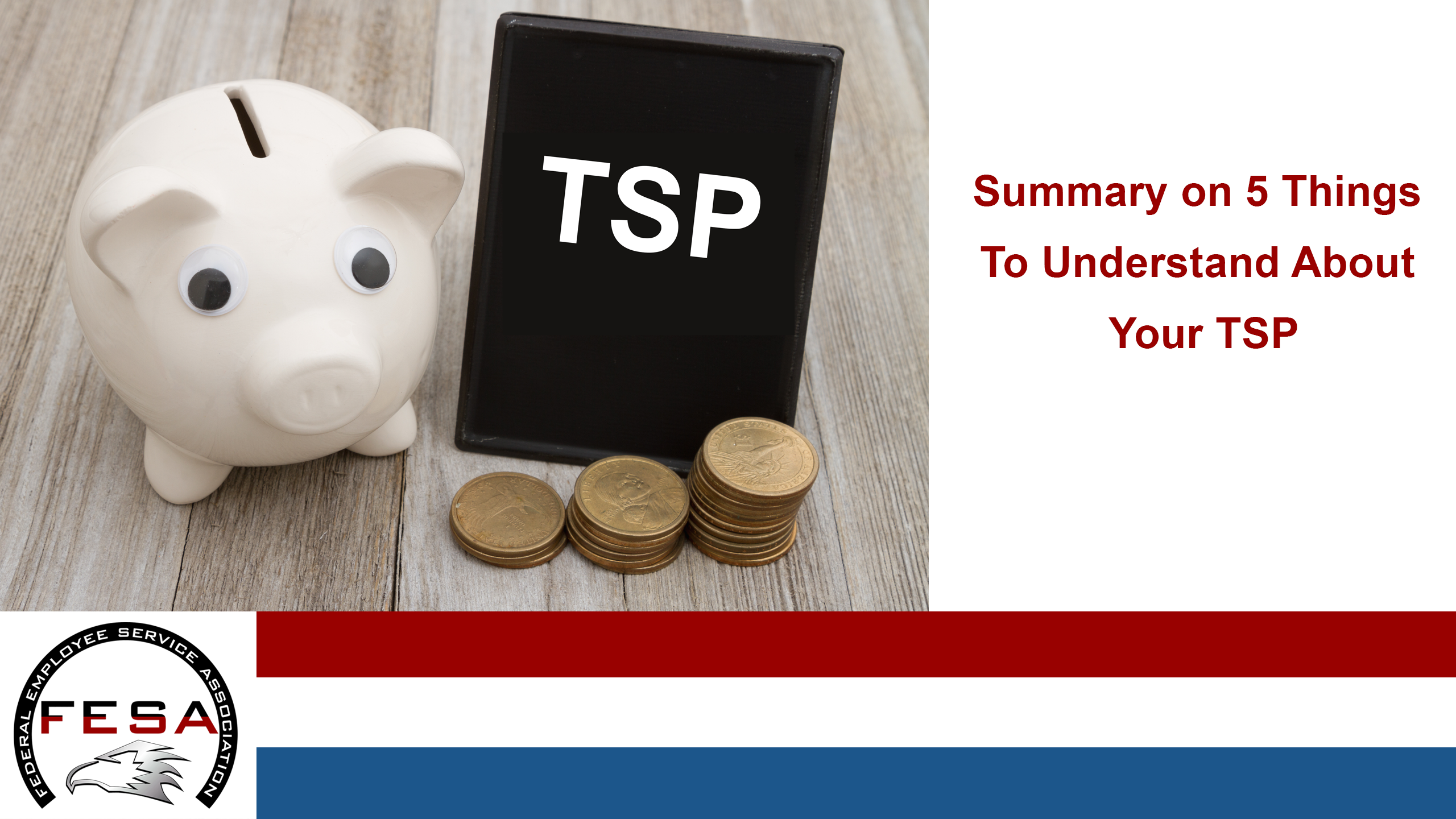Federal Retirement News
Stay up-to-date with FESA news and the federal community.

5 Things to Understand with your Thrift Savings
Federal Employees have access to one of the lowest-cost ways to save for retirement and your knowledge and understanding of how your TSP works is most beneficial. The Thrift Savings Plan (TSP) charges very low administrative fees of only .029 percent of account balances. This is much lower than other 401(k) options which charge as much as 2% which can take much more out your future retirement income and savings accumulations. The money invested lowers your taxable income now and grows your money tax-deferred until you withdraw it in retirement.
1. Your Thrift Savings Plan (TSP) works like a 401(k) plan
You are able to contribute a percentage (or flat amount) of your pay (pre-tax) into your account. Then your agency makes an additional contribution on your behalf into your account by matching the first 3% of your contributions dollar for dollar, and for the next 2%, 50 cents on the dollar. In addition, there is an automatic contribution to your account of 1% of your pay, even if you choose not to contribute to the plan. Note: There is a limit set each year by the government on how much you can contribute. In 2018, the limit was $18,500. You can choose to contribute more than this, but the balance will go into the Roth portion of your account, and it will not be a pre-tax deduction.
2. How To Enroll in the TSP
If you are an employee hired or rehired after July 31, 2010, you will automatically be enrolled in the TSP with a default deduction of 3%. You can increase, decrease or stop this amount at any time. Most service members sign up for the TSP through the myPay system. You can get a paper enrollment form and more information Establishing Your TSP Account. You'll need to specify the percentage of your basic pay, incentive pay, special pay or bonus pay to contribute. And then, after you have an account set up, you need to select your investments.
3. Decide How Much And Where To Invest
You are allowed to invest up to $18,500 in the TSP in 2018, plus an extra $6,000 in catch-up contributions if you are 50 or older. Investing a little bit with each paycheck is very convenient and manageable. Once you have decided on an amount then you must choose between the six investing options available in the TSP. You can invest in the five index funds, which focus on international firms, bonds, government securities, large and small companies. Or you can simplify your investments in the L Fund which creates a diversified portfolio of the other funds and then it conveniently automatically shifts your risk from aggressive to more conservative depending how close you are to retirement.
4. Rollovers From Another Institution
Your TSP will accept into the traditional balance of your TSP account of both transfers and rollovers of tax-deferred money from traditional individual retirement accounts (IRAs), SIMPLE IRAs, and eligible employer plans.
5. TSP Loans & In-Service Withdrawals
Eligibility
You are eligible to take a loan from your TSP if you have at least $1,000 of your own contributions and the earnings associated with those contributions in your TSP account to be eligible to apply for a loan. There are two types of loans available to you:
Residential Loans: Residential loans are only for the purchase of a primary residence.
General Purpose Loans: General purpose loans can be used for any purpose.
In-Service Withdrawals
Your TSP provides two different types of in-service withdrawals: financial hardship and age-based.
Financial Hardship: This option allows you (regardless of age) if you demonstrate financial hardship an opportunity to withdraw your own contributions and the earnings on those contributions, up to the amount of the documented hardship.
Age-based: This option allows you—if you are 59 ½ or older– a one-time opportunity to withdraw all or a portion of the vested account balances. You are allowed to withdraw it directly, or alternatively, perform a rollover to another qualified plan. If you do not roll your funds over, you will incur taxes upon withdrawal.
*By November 2019 the TSP Modernization Act of 2017 will change withdrawal options. We will update you timely next year with the changes.
